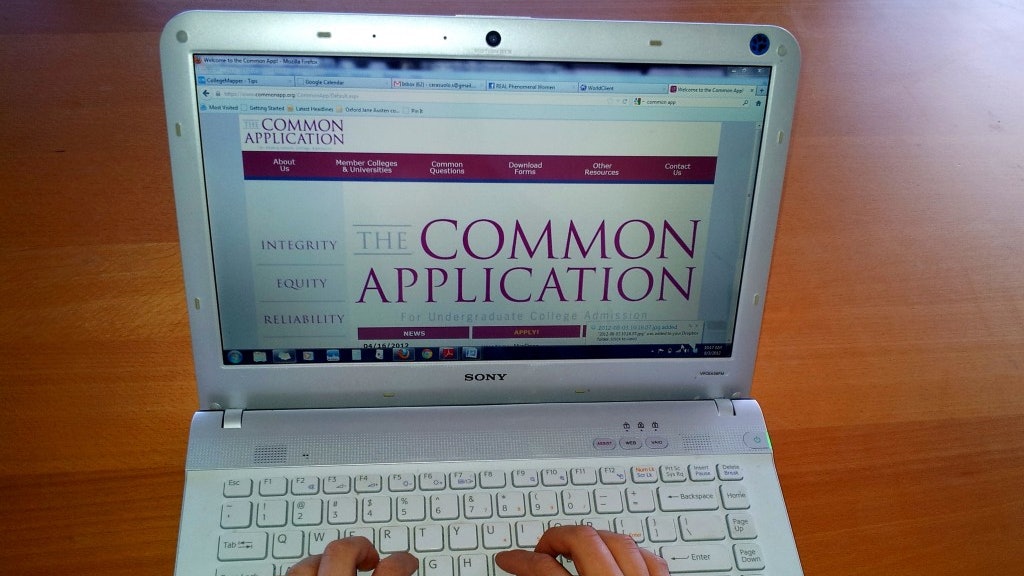The nonprofit Common Application, which offers an online tool that many students use when looking to pursue an undergraduate education, is not being used by enough students who are from lower-income backgrounds, according to the organization’s inaugural Equity Innovations Guide. Emma Steele
Emma Steele
The organization is making deliberate moves to fix that disparity.
According to the report – launched this May – Common App as an organization has more than 1,000 colleges in its network and has reached 1.4 million students during the 2022-23 application cycle year. But only 30% were those from below-median income ZIP codes, said Emma Steele, director of media and external affairs at Common App.
“There was a huge gap in below-median income students who were using our platform,” said Steele, adding that Common App measures its equity gap by comparing its student numbers to census data and the U.S. labor force.
In the 2021-22 application cycle, Common App reached 350,000 below-median income students. And if the organization keeps at that pace and changes nothing about how it does things, that equity gap between students of different income levels won’t be closing, said Stephanie Sample, Common App’s vice president of communications. If business continues on as usual, the network is projected to only reach 200,000 more below-median income students by 2030, she added.
Instead, as of last September, Common App launched Next Chapter, a collective effort for the organization and its partners to get 650,000 more low- and middle-income students to create accounts on and submit applications through its platform by 2030.
This first Equity Innovations Guide illustrates results the organization has gathered from pilots and initiatives it had implemented over the years on matters of college admissions, financial aid, and equity. The guide is meant to communicate the efforts Common App has been undertaking and would like to scale up, Sample said.
Common App intends to update this guide annually, tracking the progress of ongoing initiatives and introducing new ones, according to Steele.
“We will highlight promising pilots and practices happening at our member institutions, in high schools, and by partner organizations that help all students connect to postsecondary opportunities,” Common App President Dr. Jenny Rickard said in the report’s introduction.
One of these pilots was Common App’s Direct Admissions Program, which proactively admitted qualifying first-generation and middle-to-low-income students into the program’s network of schools on a conditional basis.
The goal of the pilot – three took place from 2021-22 with up to 13 participating colleges – was to “bridge the gap between high school and higher education,” according to the report. The three pilots showed similar results, including that students receiving these direct admission offers being more likely to apply to the offering school and that Black and Latinx students and those from below-median income ZIP codes were most affected.
“The college admissions process is stressful in general,” Steele said. “So, when you’re having a college tell you that they want you and that you’re accepted [and] all you have to do is fill out the application, I think that instills a lot of confidence.
“We’ve had a lot of student quotes saying that they really appreciated the offer and that it also opened up for them opportunities to schools they might not have considered in the past.”
Spurred on by these findings, Common App then launched a full-scale, 71-school version of this program in Fall 2023. More than 400,000 first-generation and low-to-middle-income students have since been sent direct admissions offers, and the hope is to expand and continue the program for the next cycle.
Another of Common App’s projects is a way to get money and scholarships in the hands of underrepresented minority students and low-income students to help them afford college. Partnering with Scholarship America, Common App attempted to match these students with available private scholarships per a new financial aid feature on its application.
“There’s so much money that gets left on the table every year in private scholarships that students don’t access,” Steele said. “The goal was to really partner with our reach and Scholarship America’s partnerships with different scholarship programs and to match students to those scholarships.”
According to the report, the third pilot of this particular endeavor reached more than 70,000 racially underrepresented and fee waiver-eligible students and resulted in more than $350,000 given to underrepresented students.
It also boosted first-generation student application rates by 16% and Black, Latino, and Indigenous application rates to participating scholarships by 11%.
In addition to its pilots and initiatives, Common App engaged in research about the student communities it’s trying to cater to. Some of its recent research looked into the different ways in which first-generation students are defined and whether that may affect student performance.
For instance, the average GPA of first-generation students whose parents hold associate degrees was higher than that of first-generation students with a single parent who didn’t go to college, according to one of Common App’s reports.
#Common #App #Sets #Goal #Increase #Reach #LowIncome #Students #Publishes #Findings #Pilot #Programs










